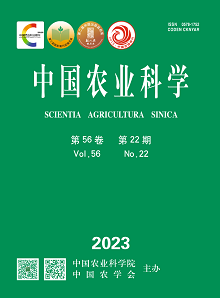【Objective】The aim of this study was to clarify the distribution law of SSR loci across the transcriptome of Asparagus officinalis, to develop highly informative EST-SSR markers and to analyze their transferability, so as to provide the tools for phylogenetic analysis, functional gene mining and molecular marker-assisted breeding of asparagus plants.【Method】Based on the RNA-seq data of 15 asparagus roots obtained from the previous stage by our research group, MISA software was used to retrieve SSR loci, and Primer 3.0 software was employed to design primers in batches. Then, the ineffective primers were eliminated by performing batch e-PCR with TB-tools software and one-to-one e-PCR with the Primer-blast programme. The information of EST-SSR markers (such as gene id, physical location, and potential function) was obtained by comparison with the genome of asparagus officinalis. The DNA of 9 A. officinalis varieties, 7 A. setaceus varieties, 5 A. cochinchinensis varieties, and 3 A. umbellatus varieties were used as templates, and 50 pairs of randomly synthesized primers were used as primers to detect the effectiveness, polymorphism and transferability of the primers developed.【Result】A total of 36 590 simple sequence repeats (SSRs) loci distributed in 30 229 unigenes with a frequency of 4.78% and an average distance of 9.17 kb were identified based on data from 15 root transcriptomes of A. officinalis. The SSRs were unevenly distributed in the 10 chromosomes, with the highest number in chromosome 7 (4 642) and the highest density in chromosome 3 (37.86 SSRs/Mb). The SRRs were distributed from di- to hexa-, with tri- (46.92%) and AG/CT (16.58%) as the most abundant repeat type and predominant repeat motif, respectively. A total of 19 695 pairs of EST-SSR primers were successfully designed, and 15 147 pairs ineffective primers were eliminated by e-PCR. Among them, 3 085 pairs ineffective primers didn’t produce any amplification products, 10 102 pairs produced severely inconsistent amplification products in terms of fragment size, 1 289 pairs had unknown physical positions in the genome, 402 pairs gave other amplification products of similar size to the target fragments, and 269 pairs generated amplification products without SSRs. Based on 2 517 EST-SSR markers located in the gene region developed in this study, the chromosome density distribution map was constructed, with a total coverage length of 1 125.51 Mb and an average distance of 447.16 kb. The potential functions of these markers were involved in many aspects, such as yield, quality, stress resistance, and so on. All 50 pairs of randomly synthesized primers could amplify target bands clearly, of which 36 pairs were polymorphic, and the average polymorphic information content was 0.330. These markers could be used in three other species of Asparagus: the transferability to A. cochinchinensis, A. setaceus, and A. umbellatus were 100%, 92%, and 88%, respectively. Cluster analysis based on the EST-SSR alleles grouped the 24 accessions into four clusters that corresponded to the species of A. officinalis, A. setaceus, A. cochinchinensis, and A. umbellatus.【Conclusion】In this study, 2 517 highly informative EST-SSR markers of asparagus were successfully developed, and the effective amplification rate was 100%. The total coverage length of the physical map was 1 125.51 Mb, and the average distance was 447.16 kb, which could be used for phylogenetic analysis of asparagus and related species. Moreover, it provided a reference for the development of EST-SSR markers in other species.









